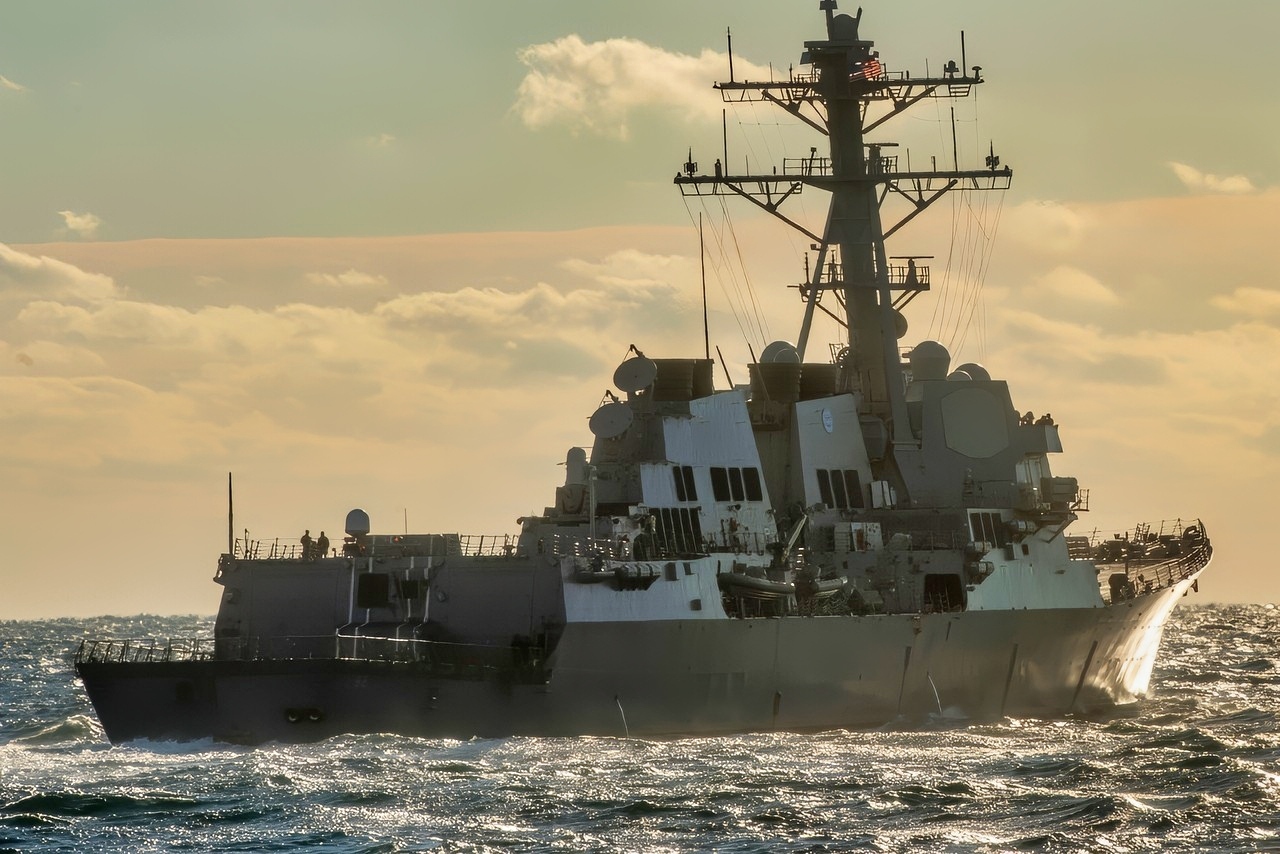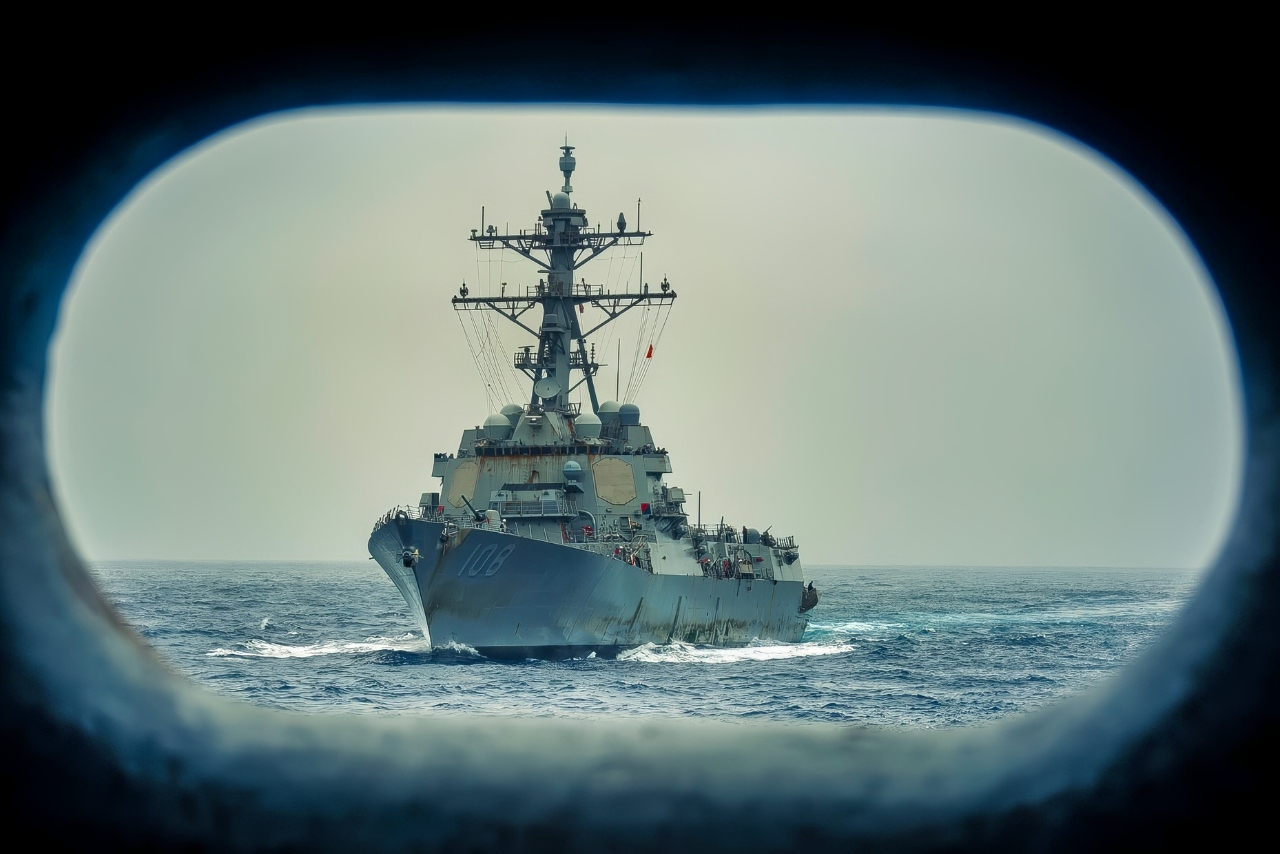Key Points and Summary – Flight III Arleigh Burke-class destroyers keep the proven DDG-51 hull but add game-changing tech: the AN/SPY-6(V)1 Air & Missile Defense Radar, Aegis Baseline 10, and major power/cooling upgrades to sustain high-end fights.
-With 96 Mk 41 VLS cells for SM-6/SM-3, ESSM, Tomahawk, and ASROC; a 5-inch gun; CIWS; and triple torpedo tubes, Flight III expands simultaneous air/missile defense and long-range strike.

The Arleigh Burke-class guided-missile destroyer USS Delbert D. Black (DDG 119) participates in a photo exercise alongside the U.S. Coast Guard and the Royal Canadian Navy during Operation NANOOK (OP NANOOK), Aug. 18, 2024. OP NANOOK is the Canadian Armed Forces’ annual series of Arctic exercises designed to enhance defense capabilities, ensure the security of northern regions, and improve interoperability with Allied forces. Black participated in the operation alongside the U.S. Coast Guard and Canadian and Danish Allies to bolster Arctic readiness and fulfill each nation’s defense commitments. (U.S. Navy Photo by Mass Communication Specialist 3rd Class Rylin Paul)
-Lead ship USS Jack H. Lucas (DDG-125) commissioned in 2023; more hulls—Patrick Gallagher, Ted Stevens, Jeremiah Denton—are in the pipeline as the Navy builds out a 24-ship plan.
-Result: a tougher, farther-seeing, harder-hitting Aegis fleet.
Arleigh Burke Flight III Class Profile
World War II cemented the career of many a legendary United States Navy flag officer (i.e., admiral), from William F. “Bull” Halsey to Chester W. Nimitz to Raymond A. Spruance, to name but a few. But even amongst those immortalized names, there’s one name that particularly stands out as a bad— man among men: Admiral Arleigh Albert Burke (October 19, 1901 – January 1, 1996), who would eventually go on to become Chief of Naval Operations (CNO) from August 1955 to August 1961.
One of Burke’s noteworthy WWII achievements was commanding Destroyer Squadron (DESRON) 23, AKA the “Little Beavers,” which, between November 1943 and January 1944, wreaked havoc upon the Imperial Japanese Navy (IJN), credited with destroying one IJN cruiser, nine destroyers, one submarine, several smaller ships, and approximately 30 aircraft.

The Arleigh Burke-class guided-missile destroyer USS Lassen (DDG 82) moves into position for an underway exercise with the British Royal Navy aircraft carrier HMS Queen Elizabeth (R08) and Pre-Commissioning Unit (PCU) Michael Monsoor (DDG 1001). The future USS Michael Monsoor is the second ship in the Zumwalt-class of guided-missile destroyers. (Photo by Mass Communication Specialist 1st Class John Philip Wagner, Jr./Released)
It was fitting and appropriate then that the USN would eventually choose to name a class of guided-missile destroyers (DDGs) in honor of ADM Burke. Doing their namesake proud, the Arleigh Burke-class destroyers were so good that they spawned two “sequels” (so to speak), as in a second and third Flight of warships in the class. Today, the National Security Journal focuses on Block III of the Burke-class destroyers.
Arleigh Burke-Class Flight III Destroyers Initial History and Specifications
Appropriately enough, USS Arleigh Burke (DDG-51) was the lead ship of the class, laid down on December 6, 1988, launched on September 16, 1989, and commissioned on July 4, 1991. Flight II came along in February 1998, starting with USS Mahan (DDG-72), followed by Flight IIA in August 2000, beginning with USS Oscar Austin (DDG-79).
Finally, the Flight III Burkes arrived, starting with USS Jack H. Lucas (DDG-125)—built by Ingalls Shipbuilding in Pascagoula, Mississippi—which was laid down on November 8, 2019, launched on June 4, 2021, and commissioned on October 7, 2023. Her motto, depending on which source you consult, is either “All American, All The Way” or simply “Indestructible” (can’t go wrong with either one, eh).
The Flight III Burkes bear the following specifications and vital stats:
Displacement: 9,496 long tons fully laden
Hull length: 509.5 feet (155.3 meters)
Beam Width: 66 feet (20 meters)
Draft: 31 feet (9.4 meters)
Propulsion: 4 × General Electric (GE Vernova) LM2500 aeroderivative gas turbines generating 100,000 shp (75,000 kW)
Max speed: 31 knots (57 km/h; 36 mph)
Crew Complement: 380 commissioned officers and enlisted seamen
Armament:
Guns: 1 × 5-inch (127 mm)/62 Mk 45 Mod 4 (lightweight gun); 1 × 20 mm (0.8 in) Phalanx CIWS (close-in weapon system); 2 × 25 mm (0.98 in) M242 Bushmaster Mk 38 machine gun system; 4 × .50 caliber (12.7 mm) Browning M2 “Ma Deuce” machine guns
Missiles: 1 × 32-cell, 1 × 64-cell (96 total cells) Mk 41 vertical launching system (VLS), capable of hosting: RIM-66M surface-to-air missile (SAM); RIM-156 SAM; RIM-174A Standard Extended Range Active Missile (ERAM, AKA SM-6); RIM-161 (SM-3) anti-ballistic missile; RIM-162 ESSM (quad-packed); BGM-109 Tomahawk cruise missile; RUM-139 Vertical-Launch Anti-Submarine Rocket (ASROC)
Torpedoes: 2 × Mark 32 triple torpedo tubes, which can accommodate the Mk 46 lightweight torpedo, Mk 50 lightweight torpedo, or Mk 54 lightweight torpedo
Differences From the Earlier Burke Blocks
The Army Recognition website provides us with a goodly amount of detail on the Flight III DDGs’ upgrades. (Yes, that’s right; Army-Navy rivalry notwithstanding, Army Recognition also willingly discusses naval technology). To wit:
-AN/SPY-6(V)1 Air and Missile Defense Radar, a scalable, modular radar that vastly outperforms the legacy SPY-1D(V) in range, target discrimination, and resistance to electronic attack
-Aegis Baseline 10 Combat System, an enhanced sensor suite which integrates air and missile defense in a way that allows the ship to simultaneously track and engage a high number of targets, including ballistic missiles, advanced aircraft, and next-generation anti-ship cruise missiles
-Upgraded power generation and cooling systems to ensure operational endurance and reliability in high-intensity maritime operations
Operational History in (Very) Brief
Thus far, the USS Jack H. Lucas is the only currently operational warship from Flight III.
Therefore, it is the only one for which we can report an operational history, which is still quite barebones at that. She arrived at her homeport, Naval Base San Diego, on October 25, 2023. Not wasting any time, one year later, she participated in the 41st Surface Line Week (SLW) Pacific competition, and on the fourth and final day of the SLW competition, she was recognized as the overall winner. (Not bad for a “rookie” warship, eh?)
The Way Forward for the Flight III Burkes
A total of 24 such DDGs have been ordered, with 15 units currently under construction or under contract; some of the ships will be built by General Dynamics’ Bath Iron Works (not to be confused with Bed Bath & Beyond, which ironically enough is currently selling an Arleigh Burke-class Destroyer model from Old Modern Handicrafts )—headquartered in Bath, Maine—whilst the aforementioned Ingalls Shipbuilding will build the others. So far, three of them have been launched:
–USS Patrick Gallagher (DDG-127), launched on July 27, 2024, with an expected commissioning sometime in the spring of 2026
-USS Ted Stevens (DDG-128), launched on August 15, 2023
-USS Jeremiah Denton (DDG-129), launched on March 26, 2025
About the Author: Christian D. Orr, Defense Expert
Christian D. Orr is a Senior Defense Editor. He is a former Air Force Security Forces officer, Federal law enforcement officer, and private military contractor (with assignments worked in Iraq, the United Arab Emirates, Kosovo, Japan, Germany, and the Pentagon). Chris holds a B.A. in International Relations from the University of Southern California (USC) and an M.A. in Intelligence Studies (concentration in Terrorism Studies) from American Military University (AMU). He is also the author of the newly published book “Five Decades of a Fabulous Firearm: Celebrating the 50th Anniversary of the Beretta 92 Pistol Series.”
More Military
The F-35A Stealth Fighter Is Also a Stealth Bomber
Mach 2.65 F-111 ‘Aardvark’ Strike Fighter Has a Message for the U.S. Military
Russia’s MiG-29 Fulcrum Fighter Has a Message for NATO
The X-40A Space Plane Has a Message for the U.S. Military
The Mach 6.7 X-15 Space Plane Has a Message for the U.S. Air Force










